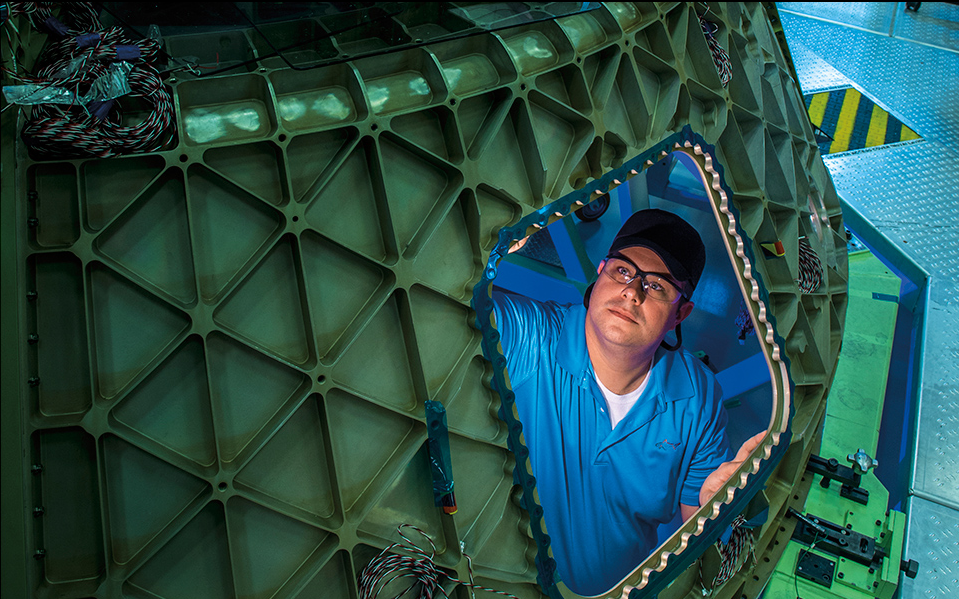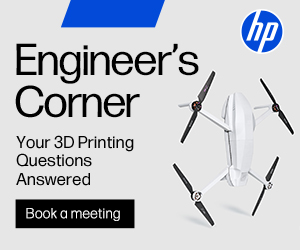Oxford Performance Materials 3D Prints 600 Parts for Boeing’s Starliner Space Taxis
 The concept of a space taxi is just something I find delightful, and the fact that it’s in the process of becoming a real thing rather than a fun idea from a Douglas Adams novel makes me incredibly happy. I don’t think I’ll ever be able to hitch a ride on a space taxi, given that Boeing is developing their CST-100 Starliner passenger capsules initially to take NASA astronauts to and from the space station – and if and when they open up to civilians, I expect a seat will cost in the thousands of dollars at the very least (to say nothing of the tip). Still, it’s delightful.
The concept of a space taxi is just something I find delightful, and the fact that it’s in the process of becoming a real thing rather than a fun idea from a Douglas Adams novel makes me incredibly happy. I don’t think I’ll ever be able to hitch a ride on a space taxi, given that Boeing is developing their CST-100 Starliner passenger capsules initially to take NASA astronauts to and from the space station – and if and when they open up to civilians, I expect a seat will cost in the thousands of dollars at the very least (to say nothing of the tip). Still, it’s delightful.
The fact that the Starliner capsules are being partially 3D printed just makes the whole program more exciting. Last month, Boeing awarded a contract to Oxford Performance Materials (OPM) to supply 3D printed components for the three Starliner capsules, which are being built under a $4.2 billion NASA contract. (SpaceX is also competing to build their own space taxis, with a $2.6 billion NASA contract.) It was the latest in a series of big achievements for OPM, which received a $15 million strategic investment from advanced materials manufacturer Hexcel Corporation last June. Now, Hexcel has added to their investment with an additional $10 million, lifting their equity stake to 16.1 percent.
The additional investment is undoubtedly welcome news for OPM, which is 3D printing about 600 parts for the Starliner capsules. Notably, the parts are all being printed in plastic rather than metal, which shows how far plastic 3D printing materials have come – not long ago, it would be unbelievable for plastic parts to be able to survive the harsh temperatures and stress of launching into space. OPM’s PEKK-based materials, however, aren’t just ordinary plastic – their properties are comparable to metal, but much lighter weight.
In the manufacture of any sort of vehicle, less weight equals less cost, and Boeing says that using OPM’s 3D printed parts is saving them about 60 percent compared with traditional manufacturing. While the company has not said what percentage of the seven-seat capsules will be 3D printed, it’s a pretty high percentage, according to Leo Christodoulou, director of structures and materials engineering at Boeing.
“It’s a significant fraction of the Starliner from the aspects of design, assembly and reliability of high integrity parts,” he said. “Using Oxford’s materials takes out a lot of cost.”
 According to Larry Varholak, president of OPM’s aerospace business, the 3D printed parts for the Starliner include “everything from brackets supporting the propulsion system to internal structures for the air revitalization system.” But will people trust plastic parts to be able to safely taxi them around outer space? They should – OPM has demonstrated that 3D printed PEKK parts can withstand temperatures from minus 300 to 300 degrees Fahrenheit, and can resist both fire and radiation. Still, it’s understandable for people to be a bit apprehensive until the structures are proven to be reliable in space.
According to Larry Varholak, president of OPM’s aerospace business, the 3D printed parts for the Starliner include “everything from brackets supporting the propulsion system to internal structures for the air revitalization system.” But will people trust plastic parts to be able to safely taxi them around outer space? They should – OPM has demonstrated that 3D printed PEKK parts can withstand temperatures from minus 300 to 300 degrees Fahrenheit, and can resist both fire and radiation. Still, it’s understandable for people to be a bit apprehensive until the structures are proven to be reliable in space.
“We’re still in the show-me stage,” said OPM Chief Executive Scott DeFelice, adding on behalf of a skeptical public, “If you don’t show me the data I’m not going to believe you.”
The public will be able to see for itself next year, as the first Starliner is scheduled to blast off in June 2018 from Cape Canaveral, and the first crew will be carried on one of the capsules in August 2018. It will be launched on an Atlas V rocket, which also has a significant percentage of 3D printed parts. Discuss in the OPM forum at 3DPB.com.
[Source: Yahoo! Finance / Images: Boeing]
Subscribe to Our Email Newsletter
Stay up-to-date on all the latest news from the 3D printing industry and receive information and offers from third party vendors.
Print Services
Upload your 3D Models and get them printed quickly and efficiently.
You May Also Like
3DPOD 252: What’s Really Happening in Bioprinting, with Mark Skylar-Scott, Stanford University
Mark Skylar-Scott is an experienced bioprinting researcher now working at one of the foremost bioprinting labs in the world at Stanford University. We talk about inexpensive desktop bioprinters and their...
Printing Money Episode 28: Recent M&A and More with Joris Peels, 3DPrint.com
Welcome to Episode 28 of Printing Money. For this one Danny is joined by our own, Joris Peels (Executive Editor, 3DPrint.com). This crossover-pod is indeed quite meta-level but it’s not...
3DPOD 251: 3D Printing for Football Helmets with Kodiak Brush, LIGHT Helmets
Kodiak Brush grew up playing football before working on crash testing. Sometimes someone’s career can seem like it is inexorably building up to one goal. And with Kodiak now making...
3DPOD 250: Dieter Schwarze, Nikon SLM Solutions
Dieter Schwarze is a true 3D printing icon. Here we get the twisting, arduous tale of Dieter’s journey into additive. Starting with inkjet, SLA and lots of other technologies, Dieter´s...































